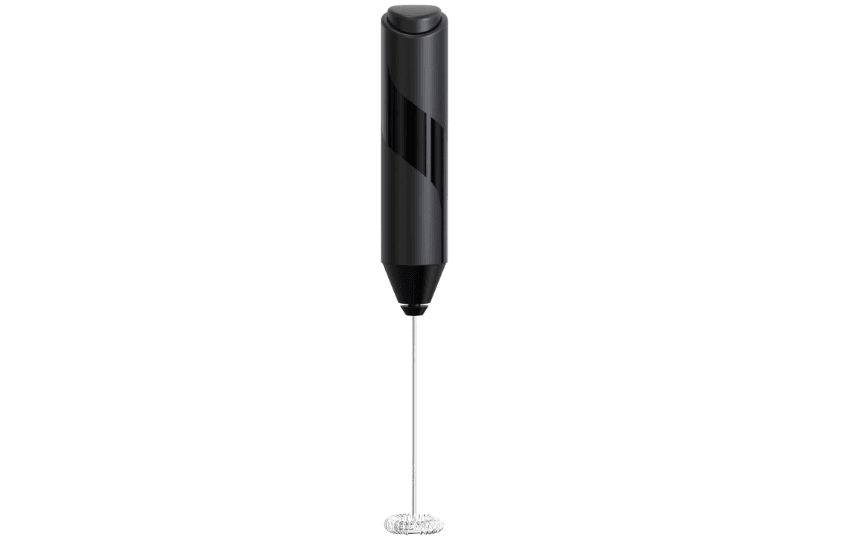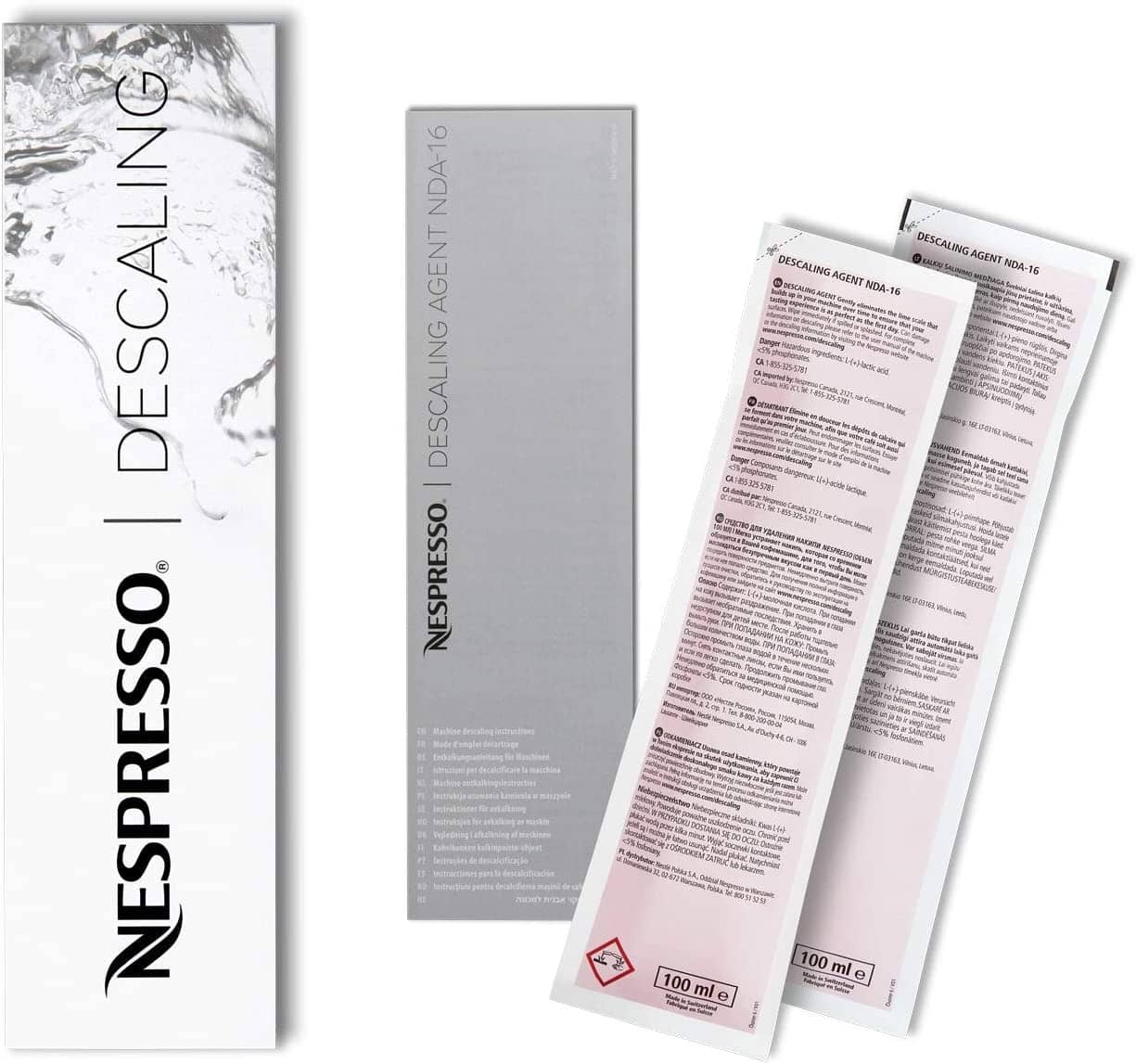Your Nespresso machine is your go-to when you need that perfect, barista-quality espresso at home. Over time, however, mineral buildup from water can reduce the effectiveness of your machine and potentially even affect the taste of your brew. Luckily, a simple, cost-effective solution is available in almost every household: vinegar. But should you use this common pantry item to descale your Nespresso machine? Or will it do more harm than good?
A Nespresso machine can be descaled with vinegar. The acidic nature of vinegar dissolves the mineral buildup inside your machine. Vinegar may corrode the rubber tubing inside the machine. It also can leave an aftertaste in the coffee.
It’s important to remember that while vinegar is an excellent at-home remedy for a quick descale, it may not be as effective as a descaling solution specifically designed for espresso machines.
Related:
How Often to Descale a Nespresso
Is it Safe to Drink From Nespresso After Descaling?
How Vinegar Cleans
Vinegar, primarily made up of acetic acid and water, is a well-known cleaning agent due to its ability to dissolve various substances, particularly mineral deposits. It’s one of my go-to cleaning products for my kitchen because it cuts through grease and grime, and it’s also excellent in the wash when I want to get rid of that stinky dog smell on my pet’s beds and blankets.
Vinegar contains acetic acid, which is a mild acid and the primary component that cleans. When you use vinegar to clean, the acetic acid molecules react with the substances that need cleaning, particularly with minerals like calcium and magnesium that are found in hard water that form limescale buildup.
Limescale, like many mineral deposits, is alkaline. A chemical reaction occurs when the acetic acid in vinegar comes into contact with limescale. The acid and the alkaline substance neutralize each other, forming water and salt. This reaction effectively dissolves the mineral buildup.
Vinegar is often used for cleaning because it can dissolve mineral deposits like those in coffee machines. The strength of vinegar and the amount of buildup affect how well it works. Vinegar is cheap and easy to get, but it’s essential to check the manufacturer’s instructions first because some materials can get damaged by it.
Special Deal: Enjoy 50% Discount on an Electric Milk Frother Here.
How Descaler Cleans
Descalers often feature different types of acids. The exact cleaning method depends on the acid being used. Most commercial descalers use lactic acid, citric acid, or a combination of both.
The official Nespresso descaling solution contains lactic acid, known for its effectiveness in breaking down mineral buildup in coffee machines, which can help improve your machine’s performance and the taste of your coffee. Additionally, it is considered safe and has minimal side effects or environmental impacts. Lactic acid is also odorless, which makes it a preferred option for use in food and beverage equipment, as it won’t leave any residual smell or taste after descaling.
On the other hand, citric acid is commonly used in many other brands of commercial descalers. Citric acid works similarly to lactic acid; it interacts with the minerals that make up the limescale in your machine, dissolving them into a solution that you can quickly rinse away. Some people prefer citric acid because it’s made from citrus fruits, which may leave a fresher scent after cleaning. However, it’s essential to note that the smell does not guarantee better cleaning power.
Why You Should Descale a Nespresso with Vinegar

You might want to descale your Nespresso machine using vinegar for several reasons. The primary one is that vinegar is an effective and readily available cleaning agent. Here’s a closer look at why vinegar could be a good choice:
- Vinegar is Effective – As we touched on earlier, the acetic acid in vinegar can dissolve the limescale and mineral deposits that build up in your Nespresso machine. This makes it an excellent option for tackling the buildup that can negatively impact your machine’s performance and your coffee’s taste.
- Vinegar is Cost-Effective – Vinegar is a pantry staple that is widely available and inexpensive. Vinegar stands out as a more budget-friendly option when you compare it to the cost of specialized commercial descaling solutions. This means you can keep your machine running smoothly and your coffee tasting great without a hefty price tag.
- Vinegar is Readily Available – Since vinegar is a common household item, you'll often have it on hand. You won't have to make a special trip to the store or wait for a shipment of a specialty product to arrive. If you're in a pinch and your Nespresso machine needs descaling, vinegar can be a handy solution.
Why You Shouldn’t Descale a Nespresso with Vinegar
While vinegar is an accessible and budget-friendly option for descaling your Nespresso machine, there are several reasons why it might not always be the best choice. Let's consider some potential downsides:
Potential to Leave an Unpleasant Taste and Smell
Vinegar is renowned for its pungent smell and intense flavor. Even after thorough rinsing, it may leave behind a residual odor or taste that could impact the flavor of your coffee.
Official Recommendation from Nespresso
Nespresso officially recommends using its descaling solution, which has been tested and optimized for its machines. Ignoring these recommendations and using vinegar could potentially void your warranty if damage occurs as a result.
Potential for Component Damage
Vinegar’s high acidity might not suit all parts of your Nespresso machine, mainly the rubbery components or tubing. Over time, the acidity could cause these parts to deteriorate.
More Effective Options Available
While vinegar can be helpful in a pinch, descaling solutions for coffee machines, such as those containing citric or lactic acid, are typically more effective at removing limescale and other mineral buildups. These products are specifically formulated for this purpose and may give a more thorough clean.
The Verdict

Given the factors discussed, we recommend investing in the official Nespresso descaling solution for the optimal care of your machine. Though it may be a few extra bucks compared to a household remedy like vinegar, the benefits significantly outweigh the costs.
Descaling your Nespresso machine isn’t a daily task; you’ll do it only a few times a year. So, a single bottle of descaling solution can last for months, making it a cost-effective investment in the long run.
By splurging a little extra on the official descaler, you’re essentially investing in the longevity and performance of your machine, which is quite an expensive appliance. Proper maintenance with the correct products can ensure your Nespresso continues functioning efficiently, preventing costly repairs or replacements.
So, while vinegar may provide a quick, affordable solution in a pinch, the official Nespresso descaling solution made with lactic acid is the best choice for maintaining your machine and securing the optimal coffee experience. Your Nespresso machine and your palate deserve that special care and attention.
Buy Official Nespresso Descaler on Amazon Here
How to Descale a Nespresso Machine with Vinegar
While it’s recommended to use the official Nespresso descaling solution for optimal results, if you choose to use vinegar, follow these steps to ensure you do it safely and effectively. Before you start, ensure that you have white vinegar on hand and that your machine is near a sink to make the disposal of liquids easier.
Ingredients:
- White Vinegar
- Water
Recipe:
- Two parts water to one part vinegar
Instructions:
- Prepare the Vinegar and Water Solution – In a large container, mix two parts of water with one part of white vinegar to make your descaling solution.
- Empty Your Nespresso – Make sure your Nespresso machine is turned off and cooled down. Then, remove any capsules from the machine and empty the drip tray and capsule container.
- Fill the Reservoir – Fill the water reservoir of your Nespresso machine with the vinegar solution.
- Start the Descaling Process – Turn the machine on and place a large container under the coffee outlet. For many Nespresso models, you'll need to press both the espresso and lungo buttons simultaneously for three seconds to enter the descaling mode. The buttons will blink to indicate the machine is in descaling mode. Please refer to your user manual to confirm the correct process for your specific model.
- Run the Mixture Through the Nespresso – Start the descaling process by making the machine dispense the vinegar solution. Allow all the vinegar solution to run through the machine.
- Let the Machine Rest – Once the vinegar solution has run through, let the machine sit for 10 to 15 minutes to allow the vinegar to work on any stubborn deposits.
- Rinse Thoroughly – After the waiting period, fill the water reservoir with clean, fresh, water and run this through the machine to rinse the vinegar solution. You might want to repeat this process a few times to ensure all traces of vinegar are entirely removed.
- Exit the Descaling Mode – Once you’ve rinsed the machine, you must exit the descaling mode. For many Nespresso models, you can do this by pressing both the espresso and lungo buttons for three seconds. The lights will stop blinking to indicate the machine has exited descaling mode. Again, please refer to your user manual to confirm the correct process for your specific model.
- Clean the Reservoir and Drip Tray – Finally, thoroughly clean the water reservoir and drip tray before using the machine for brewing coffee again.


